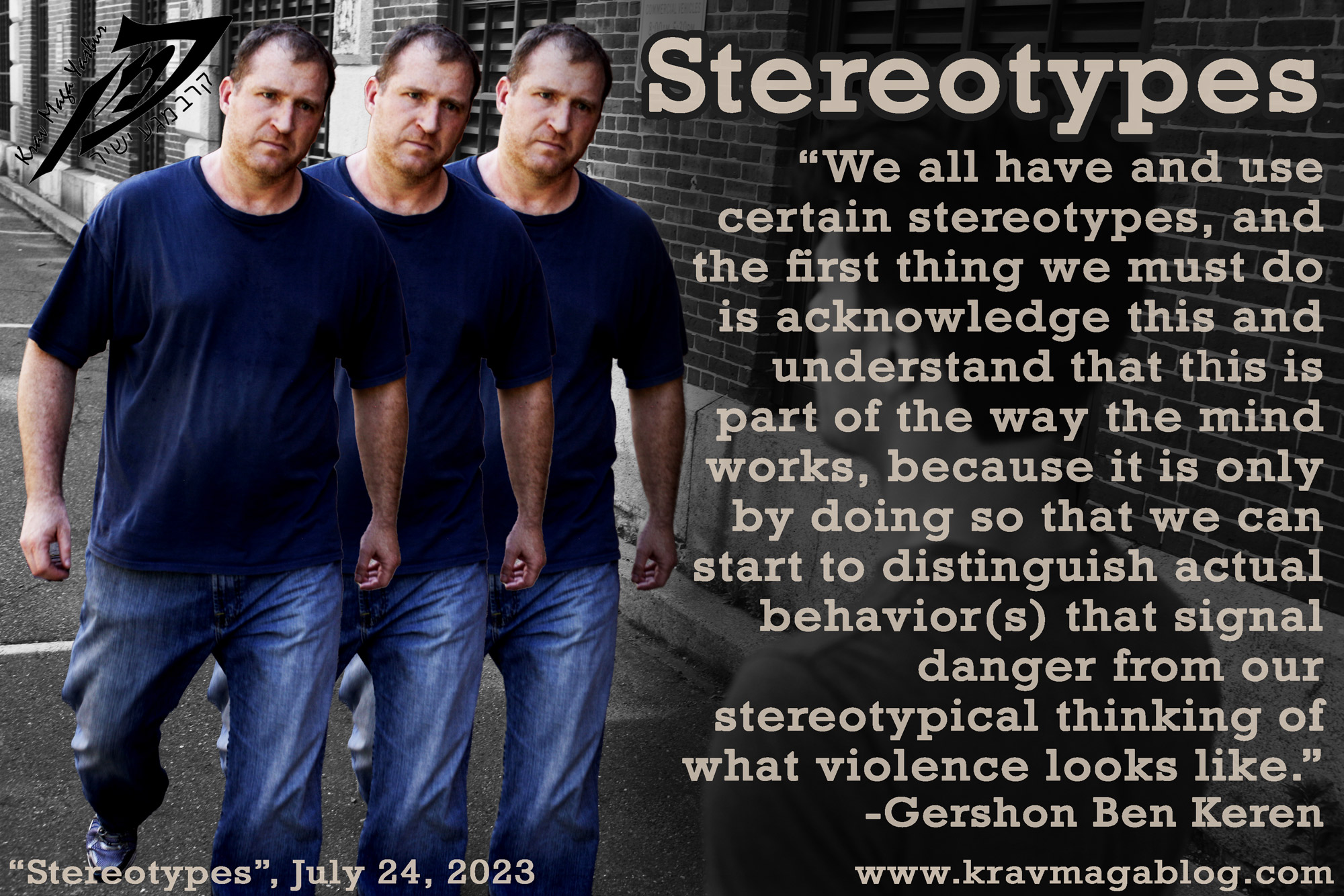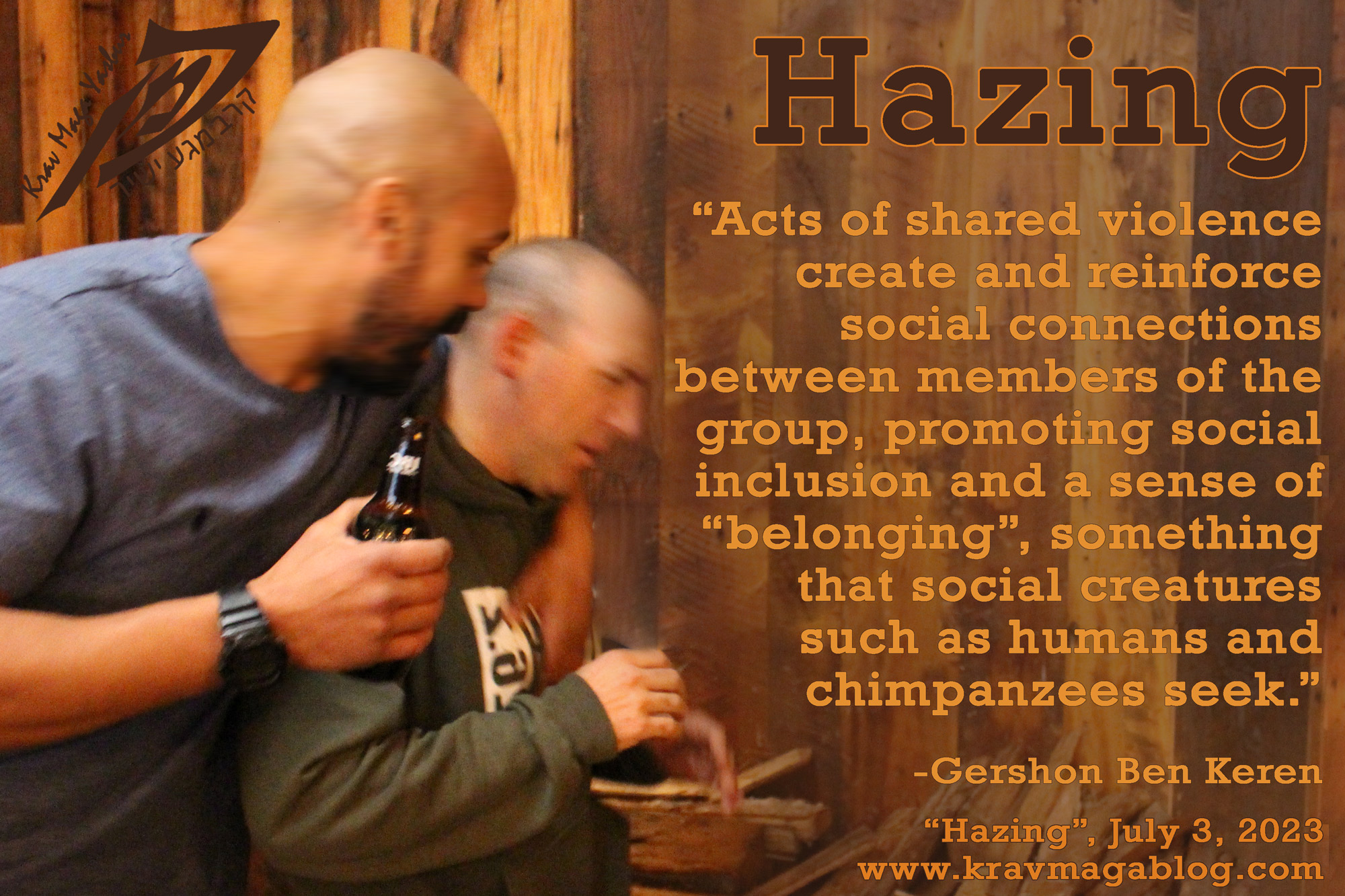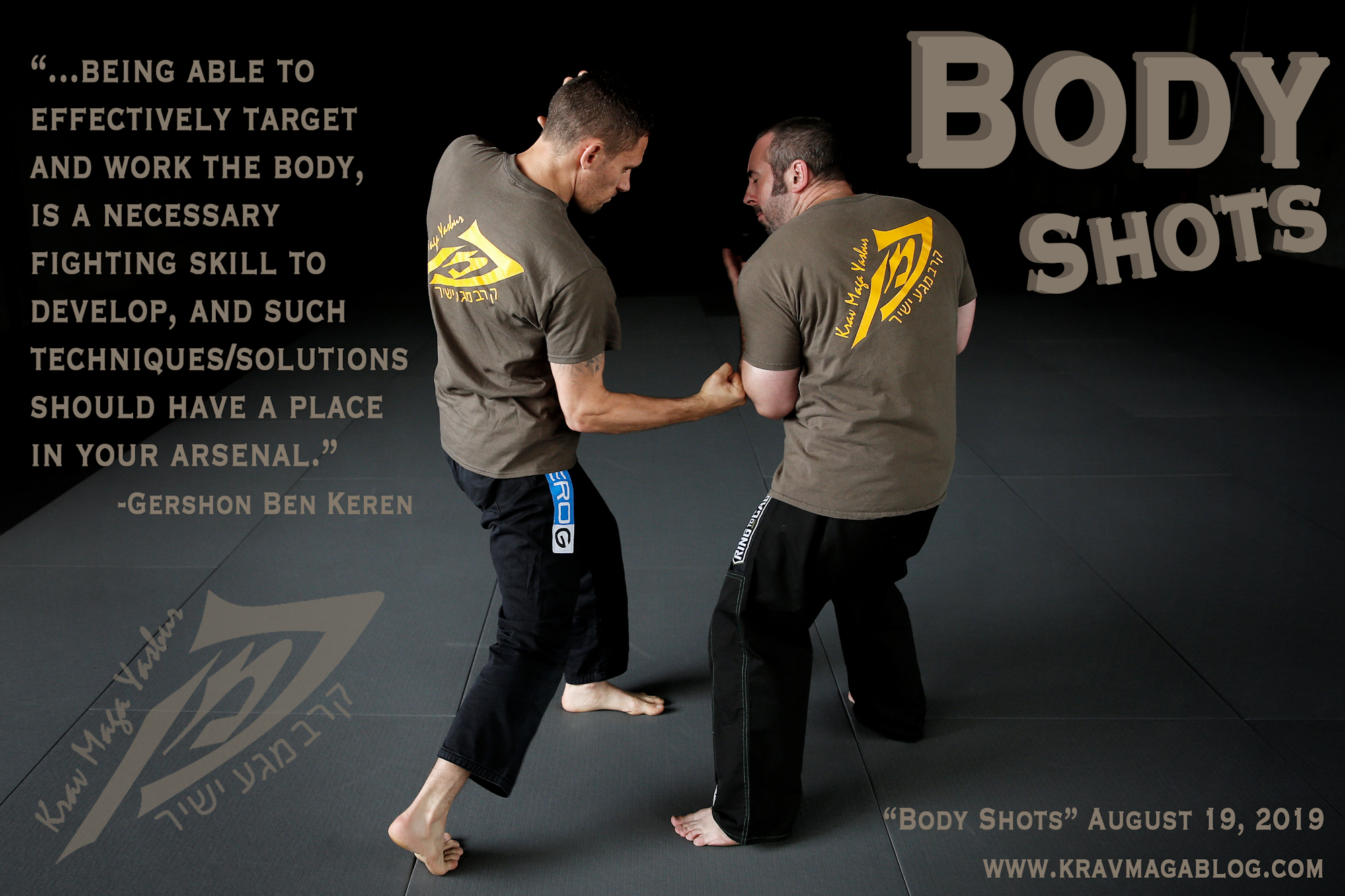Body Shots, is an article written by Gershon Ben Keren, a 5th Degree Black Belt in Krav Maga, who teaches Krav Maga in Boston, MA. He has also authored three Amazon best-Selling Books on Krav Maga.
Although it is possible to condition the body to take punches and other strikes – my time spent training with Dennis Hanover and his instructors/students in Israel demonstrated the effectiveness of such conditioning – being able to effectively target and work the body, is a necessary fighting skill to develop, and such techniques/solutions should have a place in your arsenal. I have seen several boxing matches, where the fight has been ended by body shots e.g. Frank Bruno (1985), Tommy Morrison (1995) Anthony Yarde (2018) etc. and many more where the continuous and extensive use of body shots exhausted a fighter, making them vulnerable to head shots/concussive blows. In this article I want to look at the usefulness of body shots and punches, and how they can be applied successfully in real-life situations.
I’m a relatively short guy, I’m 5’6”. This can sometimes, depending on the height of the attacker, make head shots difficult for me. For a couple of years, I lived and worked in St Helens, which is a pretty tough town in the North of England, famous for its Rugby League team. There were a lot of big guys who played the sport at the amateur level, and used to like to drink – which made working the door an interesting and difficult proposition i.e. you would have a team/squad of hard guys who were used to taking hits on the field coming in after a training session to get drunk and let off a bit of steam. This meant you were rarely dealing with one person if things got out of hand, and you’d have a group that vastly outnumbered the security team. However, over the years you learn a few tricks, from the people you’ve worked with, and one that I’d been taught – from another shorter doorman - that I found useful for dealing with taller aggressors, was a hard elbow delivered to the Xyphoid Process – which is a piece of cartilage, that hangs off of the sternum, and to which the diaphragm is attached. The diaphragm is basically the “bellows” which works the lungs and is responsible for our ability to inhale and exhale. A good, hard strike/hit here, dramatically interrupts the breathing process, and immediately takes the wind out of somebody. It’s also a target, which is on a good level, for a shorter person when dealing with people who are much taller.
The first time I used it effectively was when I had to refuse an already drunk team from coming in a pub where I was working door. The team were basically pushing into each other in an attempt to get in, and myself along with another two doormen, were trying to keep them out. At one point, I loudly shouted for them to back off, and this caused them to stop moving for a moment, giving me some space to step back. Before the pushing and shoving started again, I stepped off to the left, and steeping/driving all my weight forward, slammed my elbow into the person’s Xyphoid Process who was directly in front of me (they probably weighed around 280 lbs, and were a good 8 to 10 inches taller than me. Not that it was my intention, but everybody was so preoccupied with pushing and shoving, that nobody really saw what had happened. As the guy collapsed, unable to speak, one of his teammates, shouted that he was having a heart attack, which changed the whole mood of the group. By the time he was able to speak, it turned out he was so drunk he hadn’t even registered what had occurred, and thought he’d collapsed from some sort of seizure. That was when/where everybody’s night ended – sometimes you get lucky in these situations – as there was now talk of calling an ambulance, etc., all of which he refused. We were at the stage where the level of aggression was hitting a peak and some sort of enforcement was necessary, but 15 to 20 against a small security team, are never odds that you want to go up against. Since then, this elbow strike has been one of my pre-emptive defaults.
Another advantage with body shots – that was explained to me very early on in my time working bar/door security – over head shots, is a legal rather than tactical one. If you’ve had to throw somebody out and during the altercation, you’ve ended up punching them in the face several times, their face may start to bruise and swell up e.g. they can look much more messed up than they actually are. When the police turn up, it may now look that you really worked them over, and there is a credible case against you for using excessive force. You couple this with the fact that you’ve now got bruised knuckles from punching the skull, and everything can end up looking much worse than it is. If the case goes to trial a judge and jury, is going to have a constant reminder of your assailant’s injuries as they stand in the witness box, telling everybody what you did to them. Body shots are more discrete and rarely look as dramatic as a closed eye and a broken nose, etc. The other advantage that body shots have over head shots, is that although they’re not as likely to “finish” the fight, they will tire and exhaust a person very quickly, especially if they’re drunk. Somebody who is tired, out of breath, and feels their body cramping up, etc. is going to be much easier to manage, than somebody who has turned their pain management systems on in the expectation that they will be dealing with head shots.
The body is also a much larger target than the head, and offers flatter targets, that can be driven into – the head is smaller, rounded, and movable. This isn’t to say that head shots shouldn’t be used, but that sometimes, it is worth mixing up your targets. If you train with precision, you may also be able to specifically target the liver and the kidneys, which do have the potential to stop somebody in their tracks. It is also worth noting, that the head may not always be available to you; especially if your aggressor is covering up and protecting their face. In such instances, the body becomes much more accessible and may also cause your assailant to drop their hands/arms to protect themselves, which will then make the head/face available to you. For all these reasons and more, it is worth recognizing the usefulness of body shots and practicing their application.
0 COMMENTS















